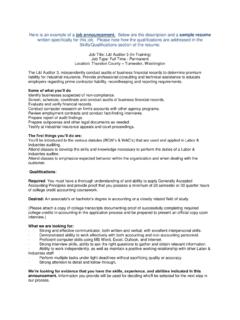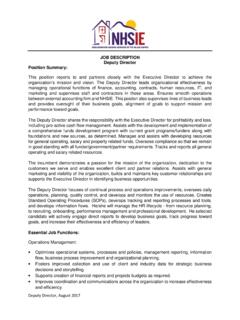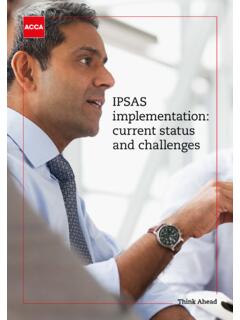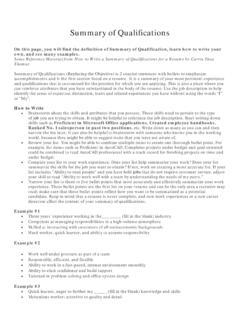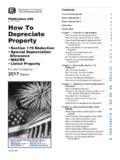Transcription of Gender and Sustainable Development - OECD
1 Gender and Sustainable Development MAXIMISING THE ECONOMIC, SOCIAL AND ENVIRONMENTAL ROLE OF WOMENG ender and Sustainable Development MAXIMISING THE ECONOMIC, SOCIAL AND ENVIRONMENTAL ROLE OF WOMEN Gender AND Sustainable Development : MAXIMISING THE ECONOMIC, SOCIAL AND ENVIRONMENTAL ROLE OF WOMEN 3 Foreword Gender AND Sustainable Development OECD 2008 Foreword Sustainable Development can only be achieved through long-term investments in economic, human and environmental capital. At present, the female half of the world s human capital is undervalued and underutilised the world over.
2 As a group, women and their potential contributions to economic advances, social progress and environmental protection have been marginalised. Better use of the world s female population could increase economic growth, reduce poverty, enhance societal well-being, and help ensure Sustainable Development in all countries. Closing the Gender gap depends on enlightened government policies which take Gender dimensions into account. This report is a contribution by the Organisation for Economic Co-operation and Development (OECD) to the United Nations Commission on Sustainable Development (UNCSD) and its cross-cutting work on Gender .
3 It aims to increase understanding of the role of women in maintaining the three pillars economic, social and environmental of Sustainable Development . The report has been prepared by the OECD Horizontal Programme on Sustainable Development and is based largely on OECD analyses. The data pertain primarily to the situation of women in OECD countries, but the insights and policy implications are applicable to all countries. The report illustrates how Gender mainstreaming in statistics, studies and statutes can lead to more Sustainable government policies and a better world economy.
4 TABLE OF CONTENTS 5 Table of Contents Foreword .. 3 summary .. 7 Economics and Gender .. 9 Women and Economic Growth .. 11 Women and Poverty Reduction .. 17 Women and Technology .. 23 Women and Management .. 29 Women Entrepreneurs .. 35 Society and Gender .. 41 Women and Education .. 43 Women and Health .. 49 Women and Migration .. 55 Women and Governance .. 59 Environment and Gender .. 63 Women and Sustainable Consumption .. 65 Women and Sustainable Production .. 69 Women and Climate Change .. 73 References .. 77 summary 7 summary Sustainable Development rests on maintaining long-term economic, social and environmental capital.
5 While the importance of investing in economic assets to assure progress has long been recognised, Sustainable Development brings attention to the ecological and human dimensions which are also key to growth and Development . In failing to make the best use of their female populations, most countries are underinvesting in the human capital needed to assure sustainability. Although women account for over one-half of the potential talent base throughout the world, as a group they have been marginalised and their economic, social and environmental contributions go in large part unrealised.
6 This market and systems failure is discussed here in terms of Gender constraints, which are based on the socially-constructed and historically-developed roles of men and women. Exploring the various aspects of Sustainable Development with a Gender perspective, the place of women, highlights the economic costs of continuing Gender gaps. It also illuminates how female contributions can be better realised at present and how strategies can be developed for meeting the needs of future generations, women and men alike. This engendering of analytical, statistical and policy work, including that of the OECD, provides the basis for enlightened policies and more Sustainable Development and growth (Box 1).
7 8 summary Gender AND Sustainable Development OECD 2008 Box 1. Making Use of Female Human Capital: Benefits and Policies Studies find that if better use were made of the world s female human capital: 1) economic growth would increase in all countries; 2) the number of people living in poverty would decline in all countries; 3) fertility rates would rise in OECD countries and decline in non-OECD countries; 4) business performance and innovation would be enhanced; 5) the cost-effectiveness of health care and social programmes would be raised; 6) government policies would better respond to the needs of all citizens.
8 And 7) environmental damage from unsustainable activities would decrease. This depends on engendered government policies including: 1) family-friendly policies to increase the labour force participation of women; 2) Development assistance policies which promote the economic role of women; 3) upgrading the status of and wages for traditional areas of women s work; 4) incentives to women to enter science and technology careers; 5) increased access to finance and support services for women entrepreneurs; 6) Gender -specific approaches in health care planning and treatment; 7) better integration of women migrants in labour markets and society.
9 8) setting targets and goals for women managers and parliamentarians; and 9) giving greater weight to female perspectives in environmental policies. ECONOMICS AND Gender 9 Economics and Gender WOMEN AND ECONOMIC GROWTH 11 Women and Economic Growth Women, which constitute half of the world s human capital, are one of its most underutilised resources. Sustainable economic growth at national and global levels depends on women joining the labour force and fuller use being made of their skills and qualifications. More working women would also help offset the negative effects of declining fertility rates and ageing populations in many OECD countries.
10 In recent decades, a large share of economic growth in the OECD area has come from employing more women. Since 1995, narrowing the gap between male and female employment rates has accounted for half of the increase in Europe s overall employment rate and a quarter of annual economic growth. It is estimated that if female employment were raised to the male rate, growth in gross domestic product (GDP) would be substantial, particularly in countries such as Japan (CSR, 2007). Similarly, a study in the United Kingdom found that the country could gain 2% of GDP by better harnessing women s skills (WWC, 2006).










